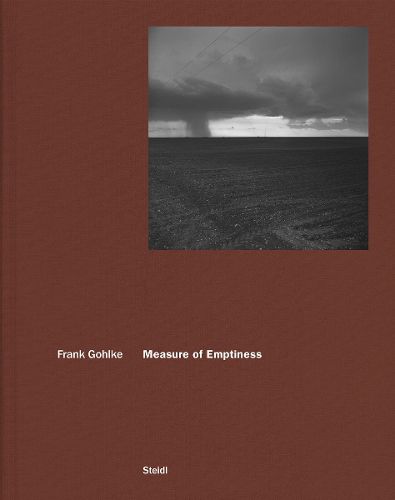Readings Newsletter
Become a Readings Member to make your shopping experience even easier.
Sign in or sign up for free!
You’re not far away from qualifying for FREE standard shipping within Australia
You’ve qualified for FREE standard shipping within Australia
The cart is loading…






Measure of Emptiness is a meditation on the vast spaces of the Great Plains, the heartland of American agricultural productivity, and the centrality of the grain elevator to its social, cultural and symbolic life. In photographs made between 1972 and 1977 with the support of fellowships from the Guggenheim Foundation and the National Endowment of Art, Frank Gohlke traveled back and forth through the central tier of states from his home in Minneapolis, Minnesota, to the Texas Panhandle, seeking an answer to the puzzle of the grain elevators’ extraordinary power as architecture in a landscape whose primary dramas were in the sky. br> In the United States there is more space where nobody is than where anybody is, said Gertrude Stein. The Great Plains are characterized by this spaciousness, and by the presence of windowless, rumbling, enormous grain elevators, rising above the steeples of churches to announce the presence of the town and to explain, in great measure, the lives and livelihoods of its inhabitants. Why did their builders choose that particular form to fulfi ll and practical necessity? And does the experience of great emptiness shape what people think, feel and do?
$9.00 standard shipping within Australia
FREE standard shipping within Australia for orders over $100.00
Express & International shipping calculated at checkout
Measure of Emptiness is a meditation on the vast spaces of the Great Plains, the heartland of American agricultural productivity, and the centrality of the grain elevator to its social, cultural and symbolic life. In photographs made between 1972 and 1977 with the support of fellowships from the Guggenheim Foundation and the National Endowment of Art, Frank Gohlke traveled back and forth through the central tier of states from his home in Minneapolis, Minnesota, to the Texas Panhandle, seeking an answer to the puzzle of the grain elevators’ extraordinary power as architecture in a landscape whose primary dramas were in the sky. br> In the United States there is more space where nobody is than where anybody is, said Gertrude Stein. The Great Plains are characterized by this spaciousness, and by the presence of windowless, rumbling, enormous grain elevators, rising above the steeples of churches to announce the presence of the town and to explain, in great measure, the lives and livelihoods of its inhabitants. Why did their builders choose that particular form to fulfi ll and practical necessity? And does the experience of great emptiness shape what people think, feel and do?